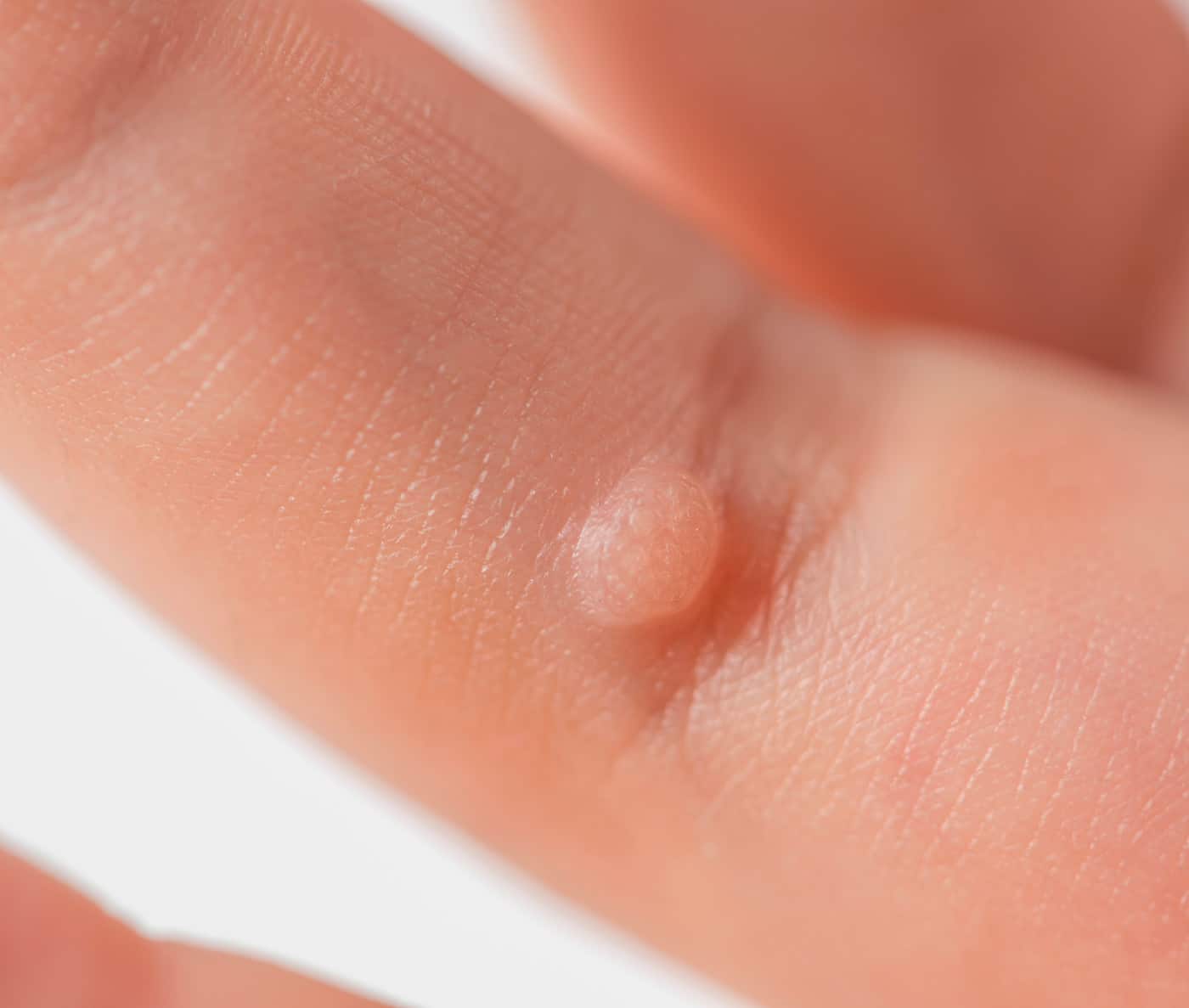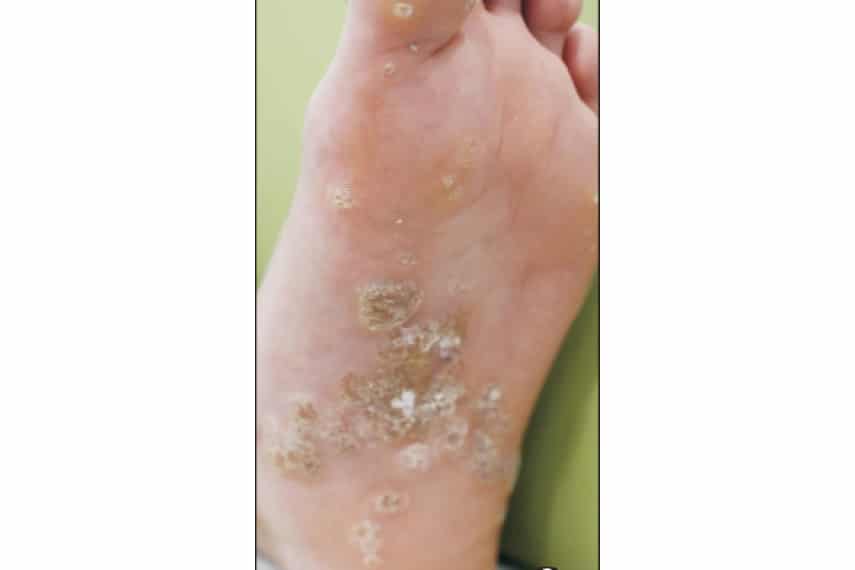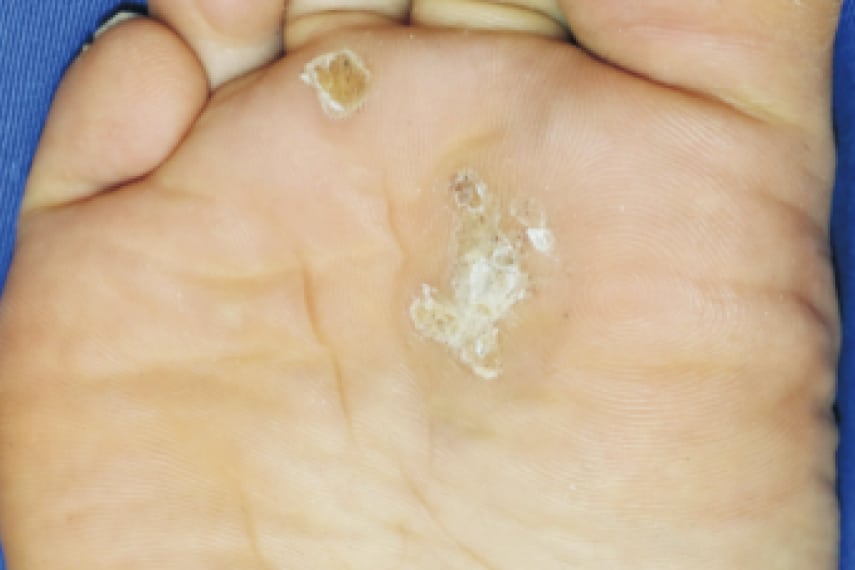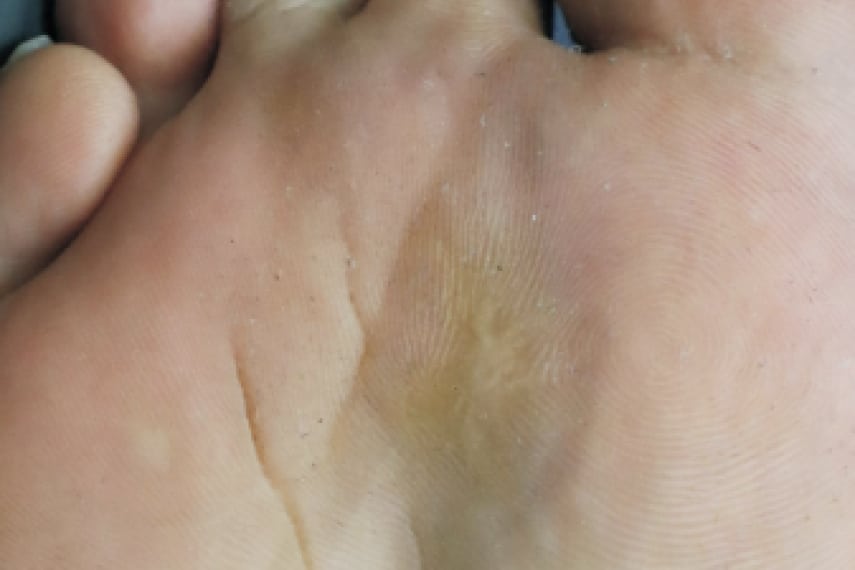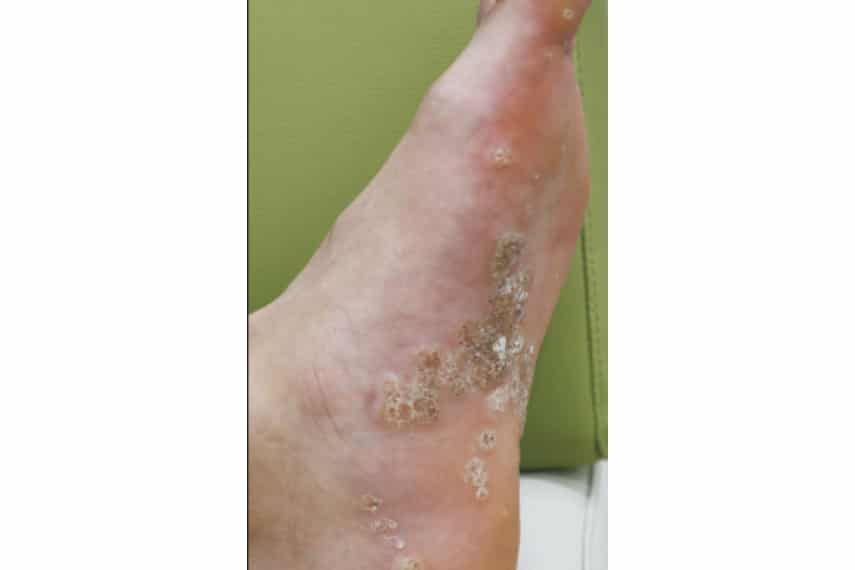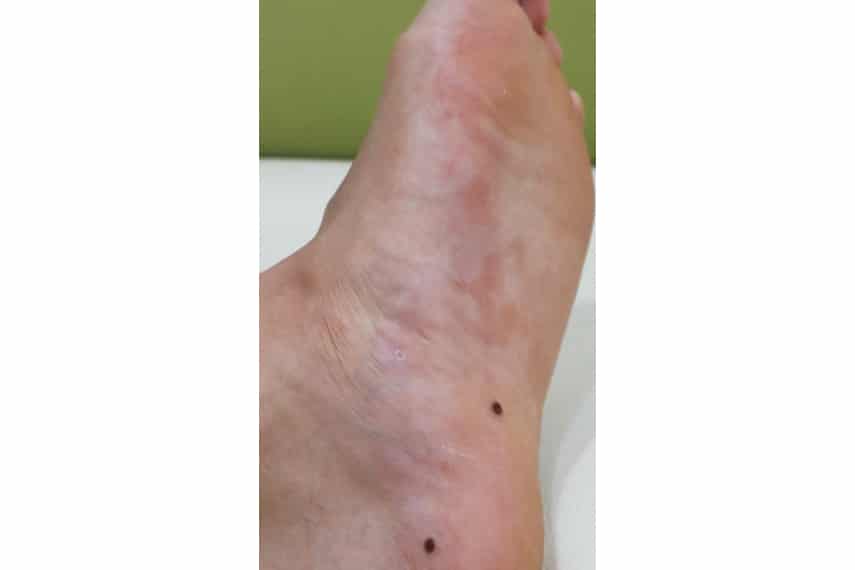Common or verrucae vulgaris are the most common. These hemispherical lesions are most often asymptomatic but can also be painful. Indeed, when they appear around the nails or on the soles of the feet , they can cause pain. Common warts are single or multiple and their size is between a few millimeters and 1 cm. They have the shape of irregular or round nodules and a firm consistency.
Common warts are often found in areas exposed to trauma (knees, elbows, face).
Filiform warts appear mainly on the face, the eyelids , around the mouth or on the neck ( shaving areas ). They are elongated and recognizable by their narrow columnar shape. The filiform wart is a variant of the common wart, it is more common in men .
Flat warts usually appear on the face, especially on scratch marks . As their name suggests, they are flat and flesh-colored, pink or yellow.
Palmar and plantar warts affect the palms of the hands and the soles of the feet. They are surrounded by a thickening of the skin ( hyperkeratosis ) which gives them a hard and rough texture. It is possible to distinguish two types of plantar warts :
- Single, well-circumscribed warts (also called myrmecia ) that make standing or doing exercises such as walking painful.
- Mosaic warts: these are multiple and painless lesions. They take the form of small plantar plates close together .
Genital warts , also called condyloma, appear in the private parts: vulva, glans or anus. They are considered STIs or sexually transmitted diseases . In this case, the HPV responsible affects the mucous membranes and not the skin. HPV infection is a major cause of cervical cancer .
Periungual warts are close together around the nail and take on a cauliflower shape.
Chronic nail biting or constantly wet hands are risk factors for periungual warts.
